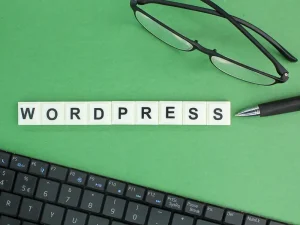Avoiding the Pitfalls: 3 Common Mistakes Amateur Designers Make in Logo Creation
Creating a logo is like crafting the face of your business. It’s your first impression on potential customers and sets the tone for your brand. But all too often, amateur designers fall into common pitfalls that can undermine their efforts to create a memorable and effective logo. Fear not! In this blog post, we’ll dive into three of these mistakes and provide expert tips on how to avoid them. So grab your design tools and get ready to elevate your logo game!
What is a logo?
A logo is more than just a pretty picture or a fancy font. It’s the visual representation of your business, encapsulating its essence and communicating its values to the world. Think of it as the face of your brand, the calling card that leaves a lasting impression.
At its core, a logo should be simple yet memorable. It needs to instantly connect with your target audience and convey what your brand stands for in seconds. A great logo can evoke emotions, spark curiosity, and create recognition.
However, creating an effective logo goes beyond aesthetics. It requires careful consideration of color psychology, typography choices, and overall design principles. Every element must work harmoniously together to capture the essence of your brand identity.
In today’s competitive market, a strong and unique logo is essential for standing out. Your logo is a visual anchor that helps customers recognize and remember your brand amidst all the noise.
So whether you’re starting a new venture or revamping an existing one, remember that designing a standout logo takes time, research, and attention to detail.
By avoiding common mistakes discussed ahead, you’ll be well on your way to creating a visually stunning emblem that represents your business in all its glory!
What are the three common mistakes amateur designers make in logo creation?
When it comes to logo creation, amateur designers often need to avoid common pitfalls that can hinder the success of their designs. Understanding these mistakes is crucial for anyone aspiring to create a strong and impactful logo.
One mistake amateurs make is using too many complex elements in their design. They may incorporate multiple colors, intricate patterns, or excessive details to make their logo stand out. However, this approach often leads to a cluttered and confusing design that fails to communicate effectively with the target audience.
Another common mistake is paying attention to the importance of scalability. Logos must look good across various sizes and platforms – from small social media icons to large billboards. Amateurs may create a stunning logo on a computer screen but fail to consider how it will appear when scaled down or blown up. This oversight can result in pixelated logos or lose their impact when resized.
Many amateur designers need to pay more attention to the significance of simplicity in logo creation. They may mistakenly believe adding more elements will make their design memorable or unique. However, simple logos are more versatile and easier for consumers to recognize and remember.
To avoid these mistakes, amateur designers should focus on creating clean and uncluttered designs with a limited color palette. They should also ensure their logos are scalable by testing them at different sizes before finalizing the design. Keeping the design simple yet meaningful will also help create an impactful and memorable logo.
By understanding these common mistakes and taking steps to avoid them, amateur designers can improve their chances of creating successful logos that effectively represent brands and resonate with audiences.
How to avoid making those mistakes
Mistakes are inevitable, especially when starting as a logo designer. But fear not! By being aware of the common pitfalls and avoiding them, you can elevate your logo creation skills to new heights.
One mistake amateur designers often need to correct is overcomplicating their logos. Remember that simplicity is key. A cluttered or overly intricate design will only confuse viewers and dilute the impact of your brand message. Instead, aim for clean lines, minimal colors, and a clear focal point that captures the essence of your business.
Another common blunder is neglecting the importance of research. Before diving into sketching or digital design, take the time to understand your client’s industry, target audience, and competition. This knowledge will inform every aspect of your logo creation process – from choosing appropriate typography to selecting suitable color palettes.
Many inexperienced designers need to remember scalability when creating logos. Your design should look great, whether displayed on a massive billboard or scaled down to fit on a business card or social media profile picture. Avoid using intricate details that may become indistinguishable at smaller sizes, and opt for vector formats instead.
To steer clear of these mistakes:
1) Embrace simplicity
2) Conduct thorough research
3) Ensure scalability
By following these guidelines and continuously honing your skills through practice and learning from feedback, you’ll soon be crafting stunning logos that leave a lasting impression on clients and customers!
The importance of a good logo
A logo is not just a pretty picture or a fancy design. It serves as the visual representation of your brand and communicates your company’s values, personality, and offerings to the world. A good logo instantly grabs attention, leaves a lasting impression, and differentiates you from your competitors.
A well-designed logo helps build brand recognition. Think about some of the most famous logos – Nike’s swoosh or Apple’s bitten apple. These iconic logos have become so ingrained in our minds that we instantly associate them with their respective companies. When customers see your logo consistently across various platforms and touchpoints, it reinforces brand recall and builds trust.
Moreover, a strong logo can convey professionalism and credibility. It shows that you take your business seriously and pay attention to detail. Customers are more likely to trust an organization that presents itself professionally.
Furthermore, a carefully crafted logo can attract your target audience by visually appealing to their tastes and preferences. Colors, fonts, shapes – all these elements should align with your brand identity while resonating with the intended demographic.
In addition to attracting customers externally, an effective logo fosters employee internal cohesion. A cohesive visual identity creates unity within the team by representing shared values and goals.
To sum up briefly (without concluding), investing time into creating a good logo is crucial for any business looking to make its mark in today’s competitive market landscape.
How to create a good logo
Creating a good logo is essential for any business or brand. It serves as the visual representation of your company and plays a crucial role in building recognition and trust with your target audience. So, how can you create a logo that stands out and effectively communicates your message?
Research is key. Take the time to understand your industry, competitors, and target market. This will help you identify what styles and elements resonate with them.
Next, simplicity is key. A cluttered or complex logo can be overwhelming and difficult to remember. Aim for clean lines, minimal colors, and clear typography to ensure your logo is visually appealing yet easily identifiable.
Another important aspect is versatility. Your logo should look great across different platforms – whether on a website header or social media profile picture – so consider creating variations that can adapt to various sizes without losing its impact.
Seek feedback from others before finalizing your design. Ask friends, colleagues, or even potential customers for their thoughts on the concept you’ve created. Their insights can provide valuable perspectives that may help refine your design further.
By following these tips while staying true to your brand identity and values, you’ll be well on your way to creating an impactful logo representing who you are as a business.
Conclusion
Creating a logo may seem like a simple task, but it requires careful thought and consideration. Amateur designers often need to avoid common pitfalls that can hinder the effectiveness of their logos. By understanding these mistakes and learning to avoid them, you can create a powerful logo that effectively represents your brand.
Many amateur designers need to correct their designs. It’s important to remember that simplicity is key in logos. Complex designs can be confusing and fail to leave a lasting impact on viewers. By keeping your design clean, minimalistic, and focused on your brand’s core message, you’ll ensure that your logo stands out from the crowd.
Inexperienced designers must focus on proper research before diving into logo creation. Understanding your target audience and competitors is crucial in designing an effective logo that resonates with your customers. Take the time to study successful logos in your industry and identify what works well for them. This will help you create a unique yet relevant design for your brand.
Many amateur designers must pay more attention to scalability when creating their logos. A good logo should be versatile enough to work across various mediums – from websites and social media profiles to business cards and signage. Test different sizes and formats during the design process to ensure your logo remains clear and legible at any scale.
In conclusion (without explicitly mentioning it), avoiding these three common mistakes – overcomplicating designs, neglecting research, and overlooking scalability – is essential for creating an impactful logo for any business or brand.
Remember that a well-designed logo serves as more than just a visual representation; it is a powerful tool in marketing strategies by leaving a memorable impression on potential customers. So, take the time to invest in professional help if needed or dedicate ample resources towards honing this vital aspect of branding.
By following these guidelines outlined here today (with SEO keywords: Logo Design Marketing Business Brand), you’re on your way to creating a logo that captures the essence of your brand and establishes your company as a leader in your industry.







